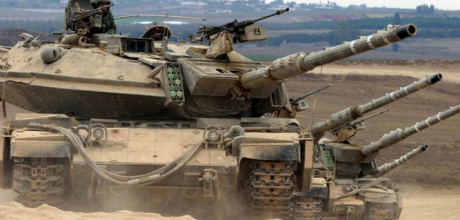
Commanders!
With this article, we finally get to the last and arguably the most iconic of the Magach series – the Magach 7 tanks.
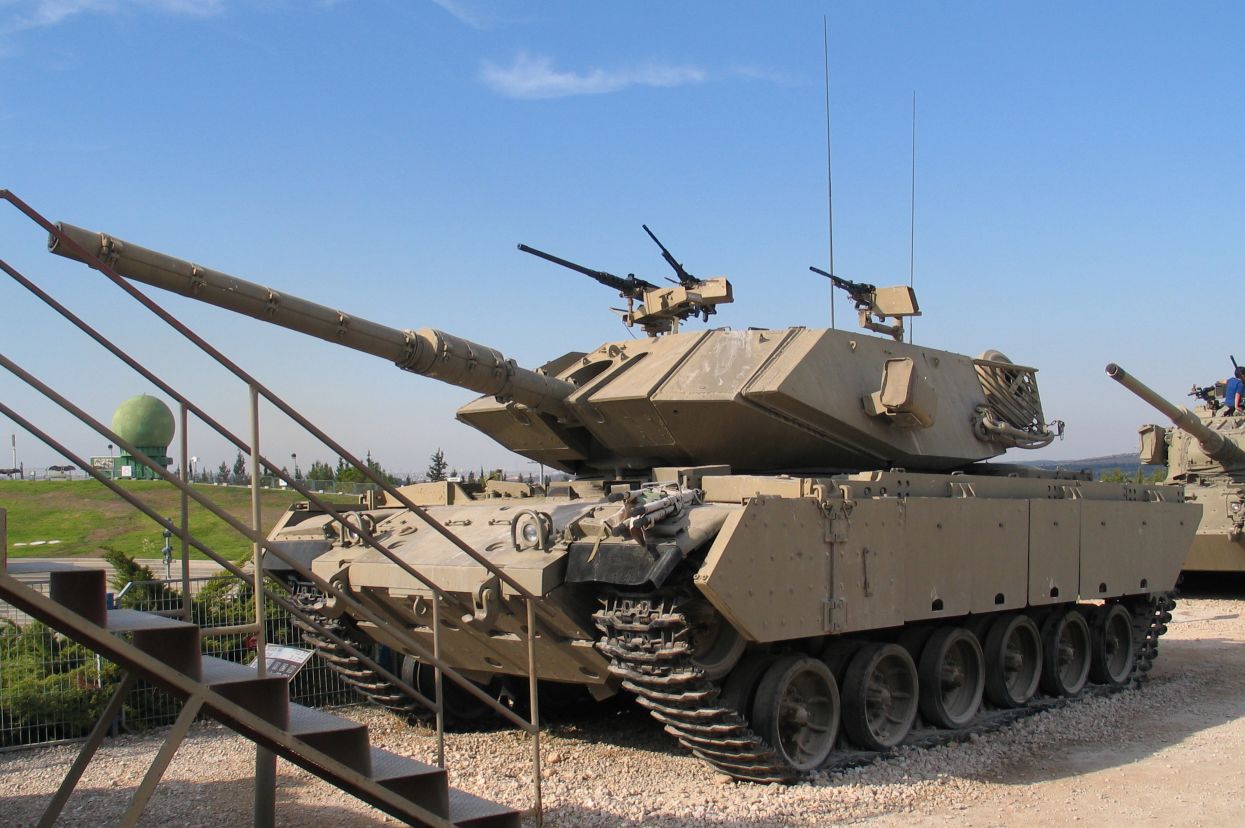
Magach 7C
The previous Magach articles (Magach 5 and Magach 6B Gal Batash) already mentioned the general Magach story – the Magach tanks are the American M48 and M60 MBT series, upgraded to match Israeli needs. The Magach 6 series tanks are, however, specific in the fact that they cover two separate vehicle development branches.
Between 1971 and 1973, Israel obtained a number of M60 and M60A1 Main Battle Tanks from the USA. Even though both types were fairly different, they both received the Magach 6 designation. The older M60 was referred to as Magach 6 while the newer M60A1 received the designation of Magach 6A (or 6 Alef).
Both tanks resulted in two distinctive branches of development that were actually surprisingly different from one another:
- M60 Magach 6 was in service alongside the Magach 6A and was later upgraded to Magach 7
- M60A1/M60A3 Magach 6A was upgraded to Magach 6B and ultimately to Magach 6B Gal Batash
We covered the Magach 6A to Magach 6B Gal Batash upgrades in our dedicated article and now it’s high time we take a look at the Magach 6 itself.
The inability to procure sufficient amounts of high-quality tanks was a major problem for Israel practically since its founding in 1948 right until the 1973 Yom Kippur War. The “modern” part is especially important. It’s not that Israel didn’t have any tanks, or even very few of them – but there was only so much you could do with a Centurion or an even older Sherman chassis. The reasons for this, described in more details in previous Israeli-themed articles, were mostly political.
The British and the French had no interest in antagonizing the Arab world (that was, with one exception, openly hostile to Israel to the point of declaring thinly veiled genocidal threats before the two major conflicts within six years). The Americans, for their part, were also not interested in escalating the tension in the region by supplying Israel with large amounts of modern weaponry but the massive Soviet-backed arms buildup in Egypt in Syria eventually convinced them that the strategy of restraint was simply not working. After all, what happened to the Jews the last time the West tried to appease a dictatorship was still fresh in everyone’s memory – by 1965, the Second World War had only happened two decades prior.
The Israelis tried to purchase the modern Chieftain MBT but when that attempt failed, they had to settle with what they could actually obtain from the Americans.

Magach 6M Tadach
The M60 wouldn’t have been their first choice. By 1971, when the Americans finally approved their export and 150 of these tanks started landing in Haifa, the M60 was already more than a decade old and was, if we oversimplify the matter a bit, just an upgraded M48 with a 105mm gun and a diesel engine. It still had its 1950s specs steel armor that was inadequate against the modern MBTs supplied to Egypt and Syria by the Soviet Union – 115mm sub-caliber shells from a T-62 would go through it like butter.
It was also an interim model tank and even the Americans thought at that point it was rather obsolete and supplied the Israelis with the more modern M60A1 as well, but when the Yom Kippur War came, the Israelis had to work with what they had.
The M60s were upgraded after their arrival with:
- Israeli “Urdan” commander’s cupola
- Additional stowage boxes on the hull
- Smaller upgrades to the suspension
- The original AVDS-1790-2 diesel engine was replaced with the 750hp 2A model, standardized for the other older Israeli tanks
The other components, however, stayed the same.
Just like with the other Magachs, the tank’s performance in 1973 was a disaster and the deployed Magach 6s suffered heavy losses for pretty much the same reasons the other Magach models did and, just like in the case of all the other Israeli tanks, this led to a series of upgrades. It’s also worth noting that additional M60 tanks were sold to Israel during the 1973 Operation Nickel Grass, bringing the total number of M60s in Israel to approximately two hundred.
In 1978, a large batch of M60A1 RISE tanks arrived in Israel. The RISE tanks had a new engine (AVDS-1790-2C 750hp diesel paired with improved CD-850-6A transmission). The goal of the RISE upgrade was to improve its reliability – although it did not produce more power than the original engine, the lifespan was much better.
The Israelis thought it would be a good idea to upgrade their aging Magach 6 tanks this way, but their older AVDS-1790-2A engines weren’t compatible with the same components. Ever ingenious improvisers, the Israelis modified the original 2A engine to have roughly the same capabilities. Most notably they improved the engine’s power generator to the level matching the RISE’s 2C engine. Thus modified, this engine was called AVDS-1790-2AG (in this case, the G stands for “Generator”).
The suspension (specifically the drive sprockets) was also modified to support the steel tracks from the Merkavas (although the first 100 or so upgraded Magach 6s were left with their original suspension).
Firepower wise, the upgrades roughly mirrored those of the M60A1 RISE as well and included:
- Gun stabilization system by Honeywell (similar to the one used on the Sho’t Kal Gimel and Dalet)
- New auxiliary turret engine powering the traverse
- Improved gunner controls
- Improved gun elevation and depression mechanism
A 60mm Soltam external-mounted mortar was also added to this vehicle to fight light fortifications and infantry squads. It turned out to be very effective against enemy ATGM teams as well.
And, finally, the protection was significantly improved by installing the Blazer ERA kit in roughly the same configuration as on the Magach 5, making both vehicles look roughly the same to an untrained eye. Just like it did for the older Sho’t tanks, the retrofitted Blazer armor came in very handy during the 1982 Lebanon War where it protected many crews from first generation ATGM and RPG hits. Last but not least, large boxy smoke dischargers were added to the front of the turret (two large boxes, one on each side of the gun).
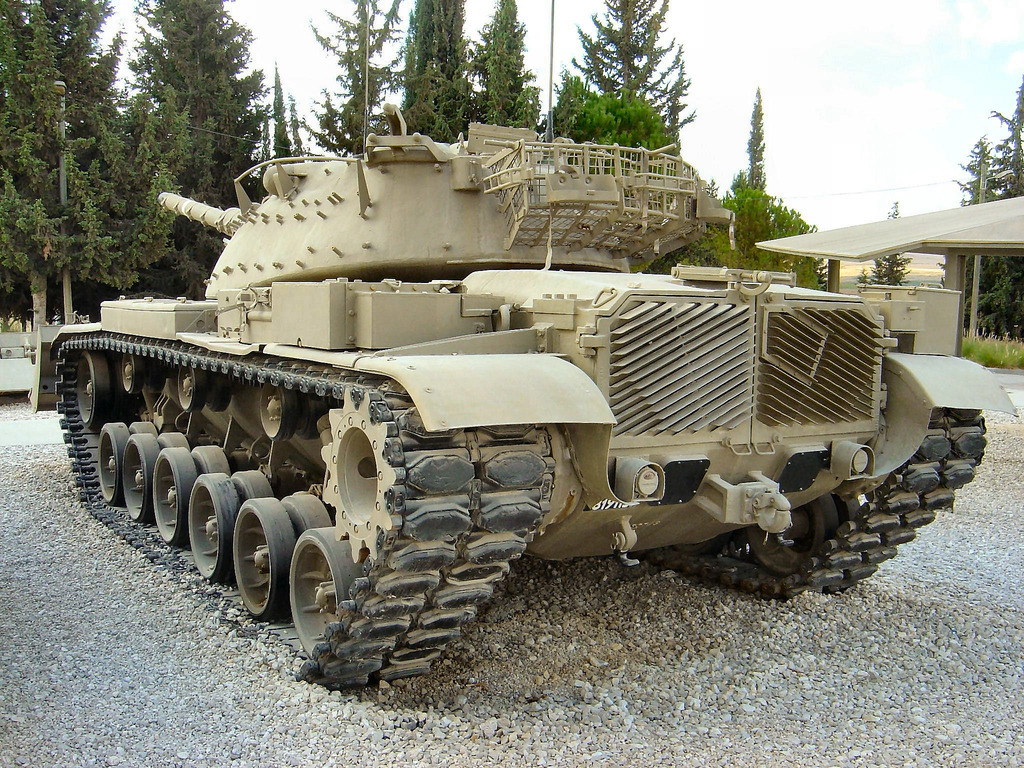
Magach 6M Tadach
Thus upgraded, this variant was called Magach 6R (or 6 Reish). Unlike in the Alef, Bet and Gimel versions where the letters usually mean improved versions in alphabetical order, in this case, the R comes from the M60A1 RISE and is supposed to signify that the vehicle was upgraded to perform on par with the newer Pattons.
The next upgrade stage, taking place just before Operation Peace for Galilee, included a new Fire Control System called Nachal-Oz with approximately one hundred Magach 6R ranks modified to carry it. The system was, simply put, excellent – its installation made the Magach 6R tanks some of the most accurate MBTs in Israeli arsenal, surpassing any other Magach and Sho’t tanks in general. The crews loved it. Thus upgraded, the vehicle was referred to as Magach 6R Kochav (or Magach 6R* – the word Kochav literally means “star” or “asterisk”).
And, finally, there was the Magach 6M (or Magach 6 Mem) – basically a 6R Kochav with the following improvements:
- Gun thermal sleeve from the Merkava series
- Crosswind sensor at the rear of the turret
Some Magach 6M tanks also had a massive American M9 dozer blade at the front, making them more practical when encountering light enemy fortifications and when fighting in an urban environment. This variant was referred to as Magach 6M Tadach.
All three (four, if you count the Tadach) modified Magach variants served more or less simultaneously and they all participated in the 1982 Lebanon War (Operation Peace for Galilee) where they proved to be rugged and generally performed quite well, all things considered. All Magach 6 tanks (perhaps 150-200 hundred in total) were converted to 6R/6R Kochav/6M standard by 1984, ending one chapter in the M60 development – but not the last chapter.
The story of the Magach 7 upgrade series is mostly identical to the one of the Magach 6B Gal Batash. By the mid-1990s, it was found out that the original Blazer ERA kit was unable to defeat the newest generation of Soviet (Russian) ATGMs that were finding their way to Hezbollah terrorist hands. It still worked against older RPGs, but it was clearly obsolete. What was even worse was the fact that while such armor was suitable to defeat lightly-armed insurgents, it provided practically no protection against kinetic projectiles (enemy APFSDS shots).
By 1995, APFSDS rounds in general underwent several major evolution steps and were able to defeat practically double (or triple) the armor thickness the older Magachs had. That was, naturally, a major problem – without Merkava’s special design that protected its crews, the Magachs would take massive losses in any tank battle, perhaps even exceeding those of the 1973 Yom Kippur War.
Such a nightmare had to be avoided – but the solution was not a simple one. Adding more ERA and making it heavier would run into basic restrictions of the chassis: the tank would be way too heavy. Instead, just like in the case of the Gal Batash, the Israelis opted to strip their Magach 6 tanks of most of the Blazer ERA kit and upgrade them with additional passive armor plating using technologies developed for the Merkava.
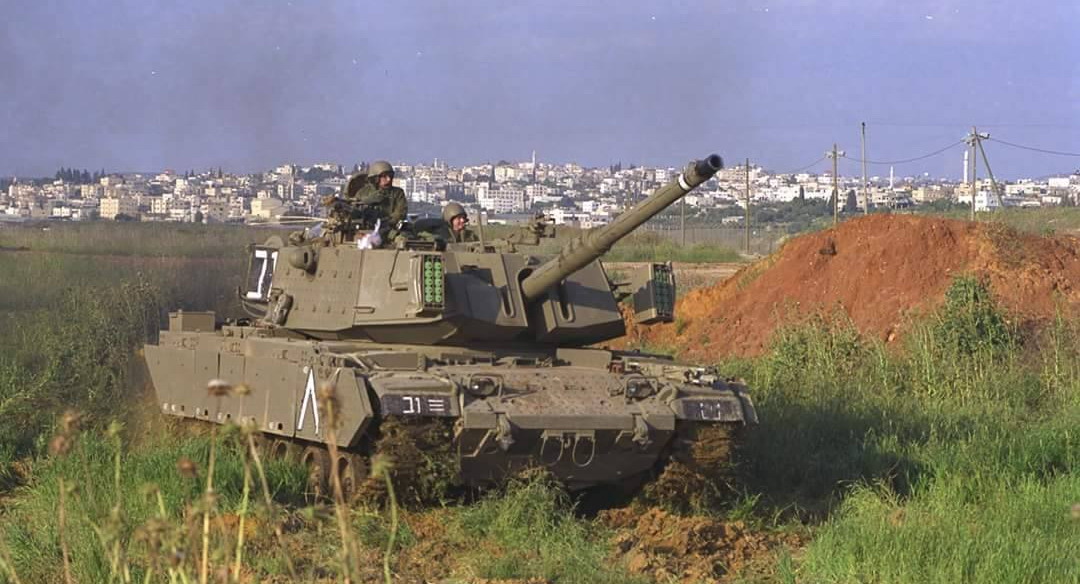
Magach 7A
The first of these upgrades was the Magach 7A (7 Alef), appearing in the early 1990s. It was based on the Magach 6M and had a very distinctive boxy-looking turret with thick Merkava-style side skirts (first time to make an appearance on the Magach 6 series). The armor significantly improved the protection against both kinetic and HEAT projectiles. Its composition is classified but it included laminate layers and high-grade armor steel. There was a price to it, though – the armor was quite heavy. The weight of the tank increased by some 5 tons but, at the same time, the 750hp engine remained the same, putting significant load on the suspension and transmission and reducing its mobility.
The Magach 7A was a lumbering beast but it did its job and protected its crew. There was a notable incident where, in 1997, a Magach 7A was hit by a salvo of Hezbollah Malyutka missiles, fired from an elevated position. Out of twenty missiles fired, only two penetrated the tank (roof hits where its armor was the thinnest – note the parallel with the subsequent Merkava 2B roof armor upgrade and the subsequent roof armor upgrades to the later Magach which we are yet to speak of). According to IDF analysts, if the tank was equipped only with the earlier Blazer kit, it would have been penetrated as many as nine times, possibly killing the crew.
In Armored Warfare, Magach 7A will be a Tier 6 Premium Main Battle Tank, available within the game client for Gold, but the ultimate Magach 7 variant will be a progression one.
The Magach 7C (7 Gimel) came in the mid-1990s, several years after the 7A variant, utilizing all the lessons learned from 7A’s design. It was based on the same principle – arrays of passive armor instead of an ERA kit – but the armor was differently (better) shaped, sporting an arrow-shaped look instead of the earlier boxy model. Thanks to its optimized design, the protection levels were improved even further while keeping the weight roughly the same as the 7A model had (some 55 tons).
To cope with all this weight and to deal with 7A’s mobility shortcomings, the tank engine was replaced to the 900hp AVDS-1790-5A variant used in the early Merkavas (the transmission was also upgraded to the automatic one from Merkava Mk.2). This really kicked the tank’s performance up a notch – once again, it was even more mobile than the older Magachs without extra armor, even when hauling the extra 5 tons around. Its maximum speed was around 50 km/h. The firepower was still on the 6M level – it had the Nachal-Oz FCS with all the later upgrades such as the gun thermal sleeve and the crosswind sensor. With the improved tracks and suspension, not much original was left from the venerable M60 at that point.
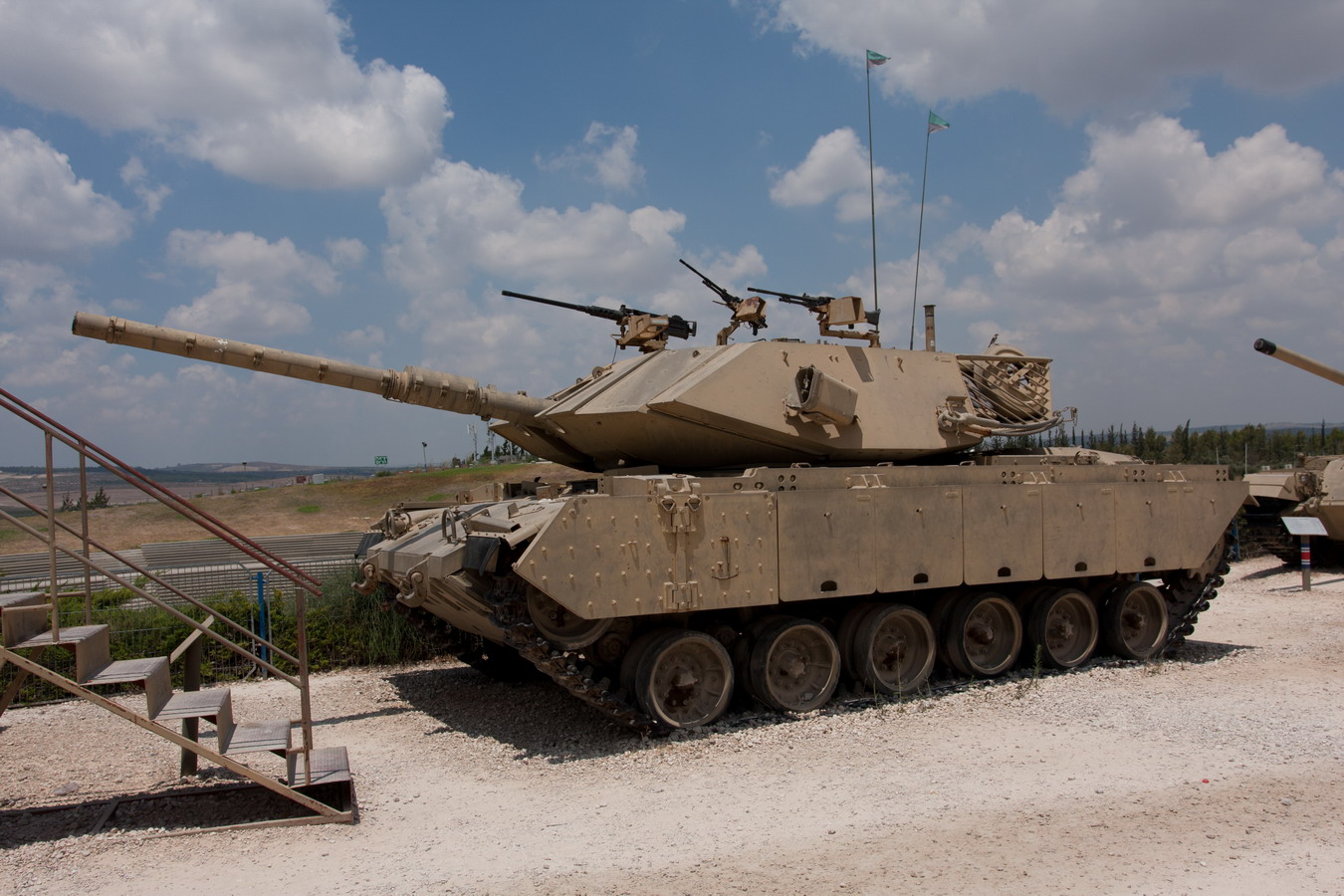
Magach 7C
This way, the tank remained in service for a long time (with the exception of some vehicle receiving additional roof armor in order to protect it from top-fired RPGs), practically until being phased out in 2014. The 7C is the variant that is most closely related to the Sabra that was developed for the Turkish military and is currently in service under the designation of M60T.
In Armored Warfare, the Magach 7C will be an Israeli Branch Tier 6 Progression Main Battle Tank.
It will represent the continuation of the Tier 5 Gal Batash gameplay with its firepower being the most important aspect and the key to its performance. Compared to the Merkava Mk.2B, it will be more maneuverable but with less damage per shot, less protection and less armor. Firepower-wise, it will be comparable to the Leopard 2AV but with a higher rate of fire (and damage per minute value).
With its excellent gun accuracy and aiming time values, the Magach 7C will, once again, be a good sniper for its class and will be perfectly suitable for players who want to experience long-range combat but who also want to keep some level of protection and survivability instead of completely relying on mobility and camouflage. The Magach 7A will be comparable to the 7C gameplay-wise, providing the Israeli branch with an excellent Premium option for those players who prefer this style of gameplay instead of the more heavy-duty Merkava.
We hope that you will enjoy it and will see you on the battlefield




